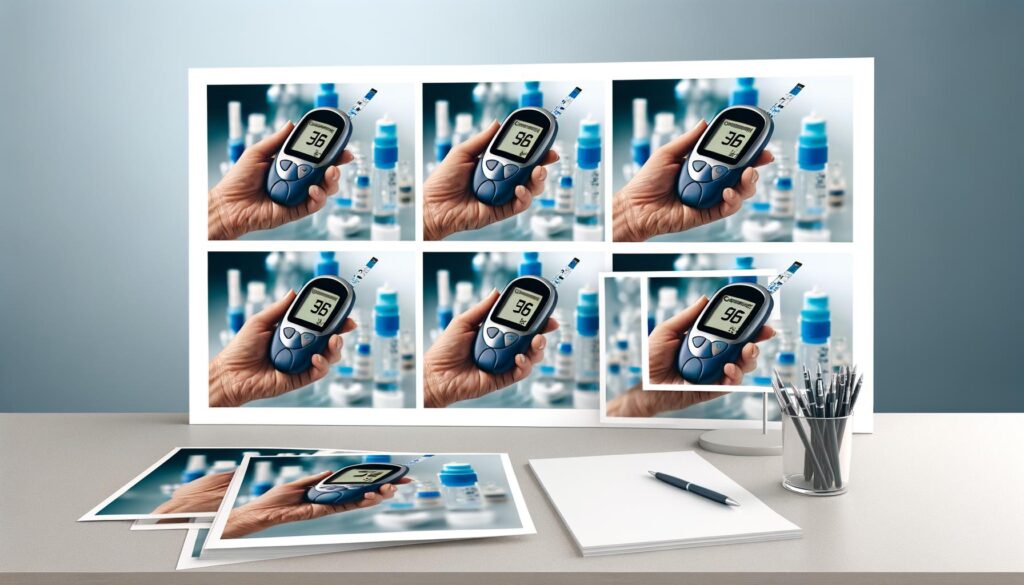Understanding Continuous Glucose Monitors: A Comprehensive Guide
What is a Continuous Glucose Monitor?
Continuous glucose monitors, commonly known as CGMs, are innovative medical devices designed to track glucose levels in real-time throughout the day and night. These devices are particularly beneficial for individuals with diabetes, providing them a more dynamic and responsive method to manage their condition. Unlike traditional methods that require frequent finger pricks, CGMs offer a pain-free alternative that continuously measures glucose levels through a sensor typically placed on the skin. This sensor reads the interstitial glucose levels, which are then transmitted to a display device, often a smartphone or a dedicated reader, allowing users to view trends and patterns over time. The primary advantage of using a CGM is the ability to capture blood sugar fluctuations, offering predictive insights and preemptive alerts to potential glucose highs or lows before they actually happen, thus enabling proactive management of dietary and activity choices.

How Continuous Glucose Monitors Work
The technology behind CGMs includes a tiny sensor that is inserted either slightly under the skin or attached to the surface. Advanced sensors work by monitoring the glucose found within the body’s fluid, not the bloodstream directly, providing indirect readings that correlate closely with traditional blood glucose levels. The data collected by these sensors is sent wirelessly, often through Bluetooth, to a compatible device for real-time review. Users can expect updates on their glucose levels every few seconds or minutes, depending on the CGM model, making it easier to track trends over time. In addition to real-time monitoring, many CGMs can offer a detailed historical record of glucose fluctuations. Users have the option of setting personalized alert thresholds, ensuring notifications about their glucose levels when they approach critical high or low points. This empowers better management of lifestyle choices and adjustments to medication as needed.
Benefits of Using Continuous Glucose Monitors
The benefits of continuous glucose monitoring are numerous. Among the best advantages is the comprehensive view it provides of glucose trends and patterns, which can be superior to snapshot readings like those from traditional glucose meters. Users can respond more efficiently to their body’s needs, reducing the risk of hyperglycemia (high blood sugar) and hypoglycemia (low blood sugar). Here are a few practical gains:
- Reduced need for frequent finger prick testing
- Real-time glucose level alerts
- Better long-term glucose control
- Customized treatment plans
- Improved quality of life for chronic conditions
These factors contribute significantly to a person’s ability to manage diabetes proactively, reducing potential diabetes-related complications over time. For those looking for continuous level data, many find joy in the ability to just say, “Show Me the Glucose Monitors” and engage in healthier habits with ease.
Choosing the Right Continuous Glucose Monitor
When it comes to selecting a CGM, users have several options based on features, duration of sensor use, and integration capabilities with other devices or apps. Factors such as the frequency of alerts, connectivity options, and comfort can influence the decision-making process. For example:
- Sensors that last several days or weeks
- Interfaces that sync with smartphones
- Water-resistant options for active lifestyles
- The ability to share data with loved ones or health professionals
It is important to research thoroughly and consult with healthcare professionals to determine the model that aligns best with individual health needs and lifestyle choices. Finding a CGM that is well-regarded for its ease of use and reliability can lead to significant health improvements.
The Future of Glucose Monitoring
The continuous advancements in glucose monitoring technology hint at a promising future, particularly for those managing diabetes. Innovations focus on improving sensor accuracy, reducing size, and enhancing user interfaces for more personalized and intuitive experiences. Upcoming technologies might include even more sophisticated data analytics, integration with broader health monitoring systems, and non-invasive methods that will render these monitors even more accessible and effective. As technology progresses, the aim remains clear: to provide exceptional quality in diabetes management tools that not only prolong and improve lives but also make managing personal health an easier task. Individuals show increasing interest in technologies that can simplify everyday glucose monitoring tasks, asking more frequently, “Show Me the Best Glucose Monitors” as they seek devices that stand out for their durability, accuracy, and user-friendliness.
